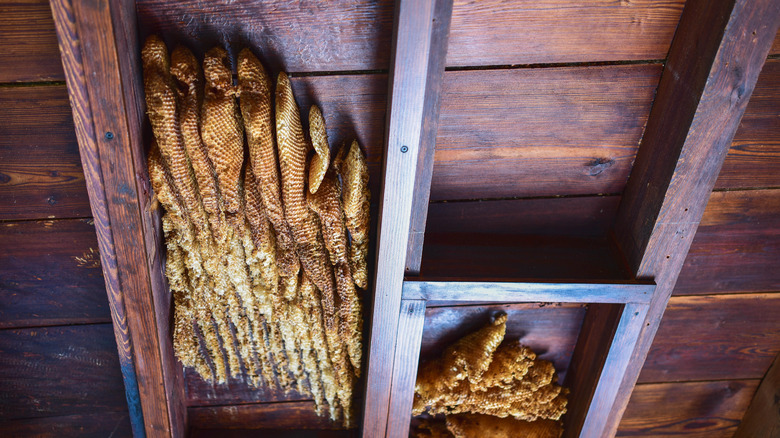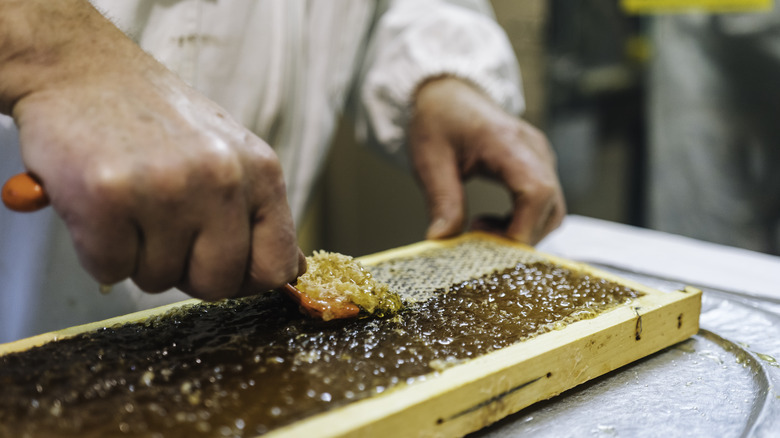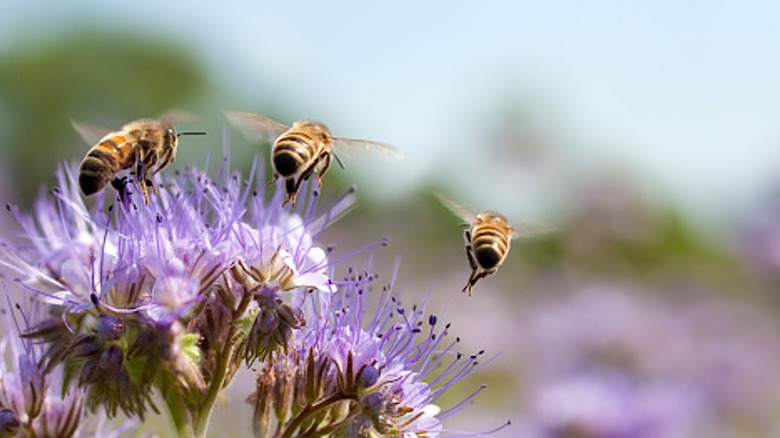The Unusual Reason Why You Might Find A Beehive In The Walls Of An Older Home
Older homes have charmingly bizarre features that reveal the way residents once lived. While they can vary from the quaint to the unsightly, these elements can tell the history of an older home. One element occasionally seen in old homes that folks may find puzzling is a large number of honeybees in the walls. While these hives are frequently written off as an anomaly of nature encroaching on interior spaces and promptly removed, the reason they're there at all may surprise you and make you reconsider their removal. Often intentionally built in the walls for beekeeping purposes, these hives were once a perfect way to harvest and enjoy fresh honey for the people who lived in the home.
Compartments for beekeeping varied in size from small hives a foot or two in dimension to several feet. They typically allowed access to the exterior of the home for the bees and access from the interior walls for homeowners to harvest the honey and maintain the bees, usually through a wood panel or small door. The bees moved in and out of the home and through pipes in the wall, where they were contained out of sight from residents in the home but free to move about outdoors.
What is wall beekeeping?
Wall beekeeping, or the placement of hives inside the walls of homes or barns, can be seen all over the globe as a way to cultivate hives and honey, including homes in the Himalayas of India where they are often a regular feature. Not only do the humans get to enjoy fresh honey, but the bees benefit from adequate shelter, particularly in climates with extremes, providing warmth in colder months and shade or coolness in summer.
The beekeepers typically set up established hives in the space between wall studs or set the right conditions for the bees to build a hive and colony on their own. Other ecological benefits of wall beekeeping include keeping the pollinator supply healthier for growing crops and gardens. While the practice faded with time in favor of exterior hives and store-bought honey, many homes still have remnants of these wall hives. They're usually boarded over and empty, but still retain glimpses of the past including dried honeycomb and other evidence of bees, as well as unexplained plugs or hatches in the home or on exterior wall.
Wall hives today
While many of today's homeowners may want these old hives removed, regardless of if they're functioning or empty, others work to restore or keep their hives. Residents of newer buildings who have an interest in fresh honey or beekeeping occasionally install them purposely in their walls, some with a plexiglass panel on the inside of the home to make the bees in the wall visible at all times. With a new emphasis on sustainable design and earth-friendly construction, wall hives can be a great way to not only access fresh honey but also provide a welcoming home for bees that helps sustain local pollinator populations in climates and environments that can be especially hard on honeybees. It's also a great way to bring more bees to your garden.
If you'd like to create a bee wall keeping in a home that does not have one, there are some great tips online about beekeeping in general, both indoors and out, as well as suggestions for building a wall hive in an existing wall. If you do not want to alter a wall but would love to make a home for bees inside, you can also purchase a system that you mount on the walls that allows bees to live in the hive in a visible habitat that includes tubing for access to the outdoors.


